EVERYTHING ABOUT THE CRF450 …FROM THE MAN WHO DESIGNED IT
By Adam Duckworth
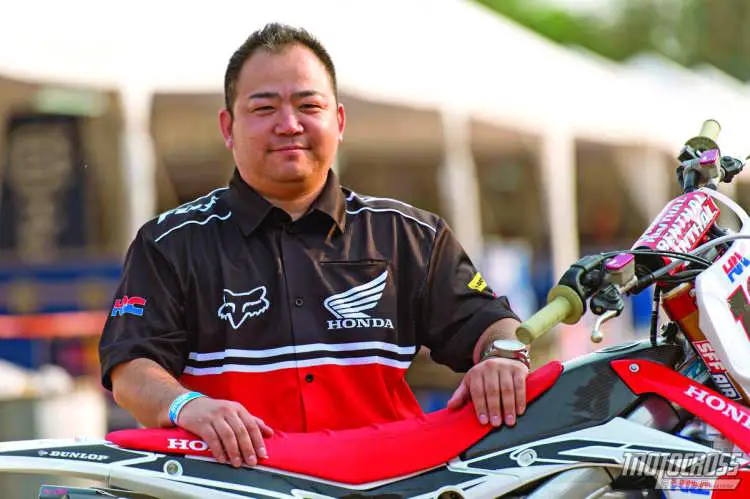 Yasuhiro Yokoyama.
Yasuhiro Yokoyama.
You may not know his name or recognize his face, but motocross tracks the world over have been dominated by this man’s work for more than two decades. He is Yasuhiro Yokoyama, and he knows the innermost secrets of Honda’s Research and Development department.
Based at Honda’s Kumamoto factory, Yokoyama is the man in charge of all of Honda’s CRF bikes—from the production machines that you can buy to the factory bikes of Max Nagl, Justin Barcia, Evgeny Bobryshev, Trey Canard and Eli Tomac. During his career at Honda, Yasuhiro Yokoyama has worked with everyone from Jeremy McGrath to Ricky Carmichael to Stefan Everts. He’s been involved in Honda’s change from two-stroke CR250s in steel frames to the fuel-injected, air-suspended, short-stroke, four-stroke CRFs of today. And when he isn’t working with the factory-backed race teams, he is dreaming up the CRFs of the future—as far ahead as 2020.
It’s rare to get Honda’s R&D chief to answer any questions, so MXA was surprised when Yasuhiro Yokoyama agreed to talk to us. We asked him why production CRFs are so underpowered, why Honda went back to twin exhausts, the future of air forks and his thoughts on Yamaha’s reverse-mounted engine. Enjoy this brief insight into the inner workings of Honda.
TWO YEARS AGO I WAS PROMOTED TO PROJECT LEADER OF THE HONDA CRF PROJECT. I replaced Taichi Honda, who is now leading Honda’s Dakar project. I am involved in both production bikes and factory bikes. I have worked for Honda so long I can’t remember! I think it’s 23 years now. Lots of senior people have worked for Honda for a long time. It’s that sort of company. It takes a long time for them to catch you out!
I’M A TRAINED ENGINEER AND STARTED AT HONDA BY WORKING ON WELDING ROBOTS. THAT COMES UNDER THE R&D SIDE IN MOTORCYCLES. I was always interested in motorcycles, especially offroad motorcycles. That was always my passion. I have ridden a few road bikes over the years, but my real love has always been dirt bikes. In my time at Honda, it has almost always been offroad bikes, except for a few years working on the Moto 3 road race project. That was when 125cc two-strokes were replaced with 250cc four-strokes and my experience with racing 250cc engines from the CRF was valuable. But, I couldn’t wait to get back to offroad. I spend roughly 50 percent of my time on production bikes and 50 percent on race bikes, but, of course, it changes at different times of year. When it’s time to make production bikes sell, I work almost 100 percent on that. I oversaw the CRF as a personal project, and I’m now overall in charge of all CRF production bikes, including the CRF150. It’s getting a bit old, but I’m not sure if it really needs changing. I hope that Honda will develop a new version, though.
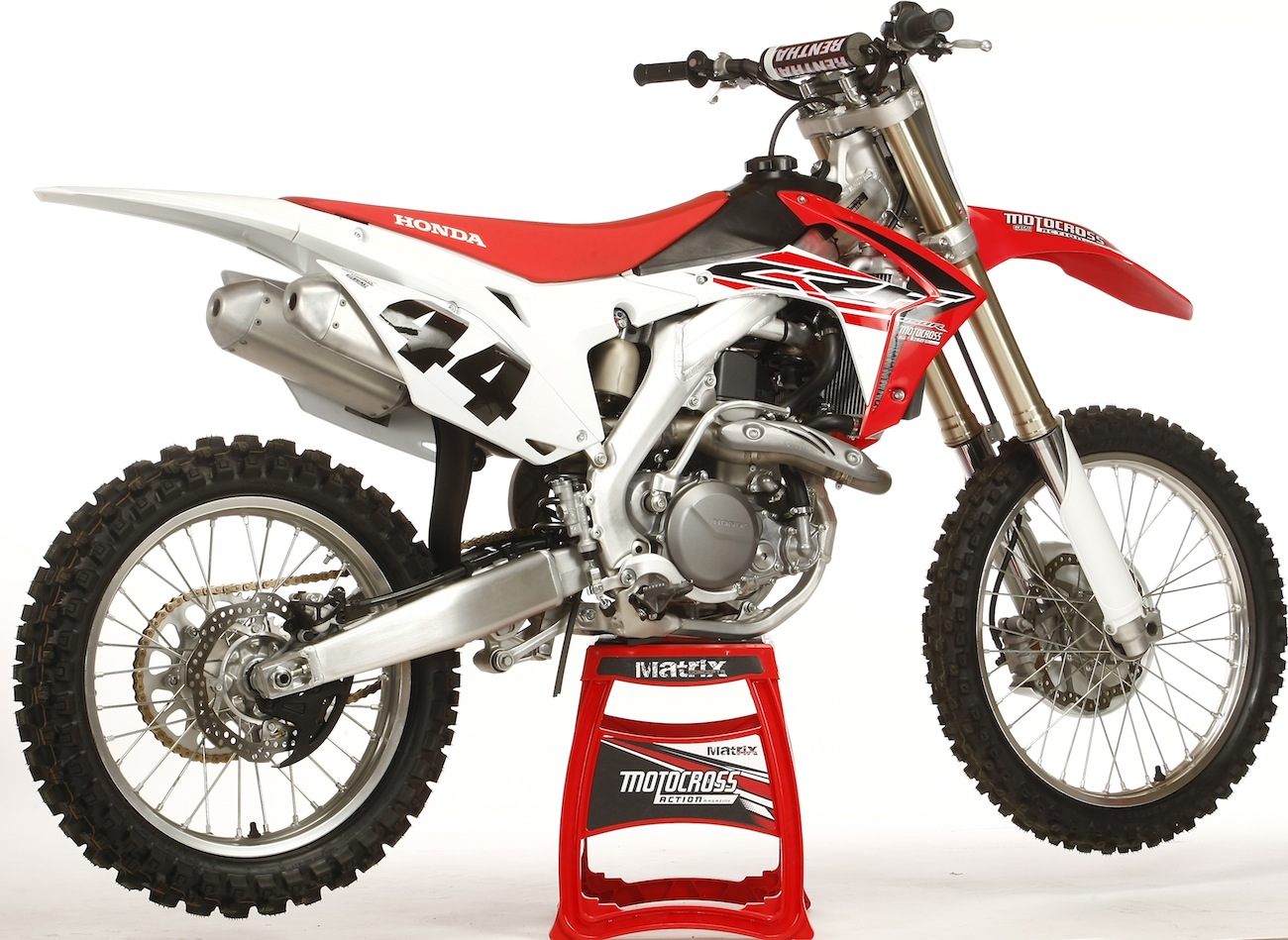 “HONDA CRFs SHOULD ALWAYS BE THE EASIEST TO RIDE AND MOST FUN, BUT NOT NECESSARILY THE FASTEST.”
“HONDA CRFs SHOULD ALWAYS BE THE EASIEST TO RIDE AND MOST FUN, BUT NOT NECESSARILY THE FASTEST.”
I LIKE THE PRINCIPLES OF THE FOUNDER OF HONDA, SOICHIRO HONDA. HE SAID HONDA IS AN ENGINEERING COMPANY, SO THE FOREFRONT OF THAT IS R&D AND RACING. My passion is working with new technology on the R&D side. I’ve worked on production motocross bikes for many years. The first was 1996 Honda CRs, then on to the 1997 range, which was the first aluminum frame. At that point I was a test engineer—not really involved with the designing, so it wasn’t really my project, and you can’t blame me! I was especially involved with the cooling system and what we call driveability testing.On each production bike project, there is one overall engineer responsible for the project. Then under him it is split into sections of responsibility—engine side and chassis side. Then, under each of those are people who have responsibility for key areas, such as cooling, but not totally specific areas. For example, there isn’t one person in charge of footpegs; it’s a team effort, and they work together. After all, what’s important is we want to produce the whole machine.
FROM WORKING ON COOLING SYSTEMS, I WENT ON TO ENGINES AND WAS INVOLVED IN BUILDING HONDA’S FIRST MODERN FOUR-STROKE RACE MOTOR FOR MOTOCROSS, THE CRF RANGE. It was a huge change for Honda after so many years of two-strokes. And, honestly, I really liked the two-strokes! I had to make a big change in my mindset. The winds of change at Honda were to move toward the four-stroke, so I had to go that way. It’s completely four-strokes now, but it doesn’t make me sad anymore.
HONDA IS ABOUT RACING AND PRODUCTION BIKES. OUR PHILOSOPHY IS TO DEVELOP BIKES FOR THE CUSTOMERS AND GIVE THEM WHAT THEY WANT. We could do everything; nothing is impossible if customers demand it. It’s not about whether we make two-strokes or four-strokes; what is most important at Honda is making bikes that are wanted by our customers—for fun, enjoyment and racing. If customers change and want two-strokes, it would be difficult, as we need to work more on two-stroke technology, especially in the field of emissions. There are some new technologies, such as direct injection, but we stopped all two-stroke projects. My personal opinion is that Honda is now going in a different direction.
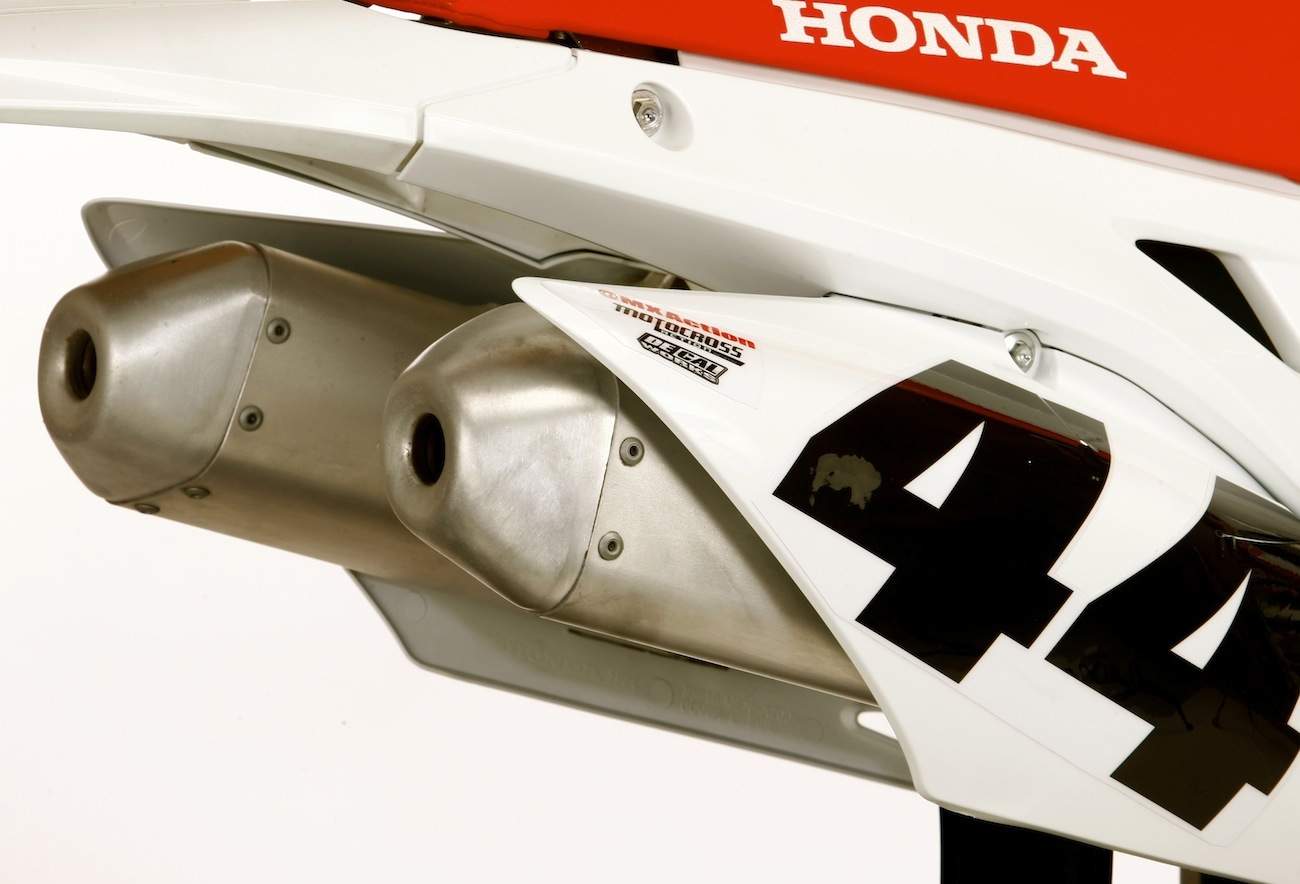 “MASS CENTRALIZATION IS 100 PERCENT WHY WE HAVE GONE TO TWIN PIPES ON THE NEW CRF’S.”
“MASS CENTRALIZATION IS 100 PERCENT WHY WE HAVE GONE TO TWIN PIPES ON THE NEW CRF’S.”
HONDA CRFs SHOULD ALWAYS BE THE EASIEST TO RIDE AND MOST FUN, BUT NOT NECESSARILY THE FASTEST. For many years we have considered mass centralization, and it’s at the heart of what we do, as it makes the bike fun to ride and easy to handle. It’s about moving the major parts of the bike as close to the center of mass as possible, not necessarily as low as possible.
MASS CENTRALIZATION IS 100 PERCENT WHY WE HAVE GONE TO TWIN PIPES ON THE NEW CRFS—to make the bike more balanced. We tried them on the CRF250 from 2006 to 2009 but went away from the idea. Now it’s back. It’s difficult for me to explain why we did it. On the previous CRF450, for example, we built it with a single muffler, but it was louder than is allowed now, as the sound limit is lower. We wanted more mass centralization and a quieter bike, so twin silencers was the way to go.
OUR COMPETITORS’ BIKES HAVE MUCH LONGER MUFFLERS, BUT WE DON’T LIKE THAT. They can be easier to damage in a crash, maybe, but it’s all about the weight being so far away from the center of mass. I’m not sure if a typical rider can feel the difference, but I know Honda riders really like the way our bikes feel.
WHEN WE HAVE A NEW BIKE READY TO LAUNCH, WE HAVE LOTS OF DIFFERENT RIDERS TEST IT, from factory GP racers to Honda’s own professional test riders, but also we have some average clubmen riders too. We use many professional testers on the R&D side. We like to get the feedback from top racers. We combine a lot of their comments and come to a conclusion. When we launch a new model, lots of people will have ridden it. It’s a secret just how many, but more than 10. And I ride them too! I have a 2015 bike next to my desk. I have been riding it a lot.
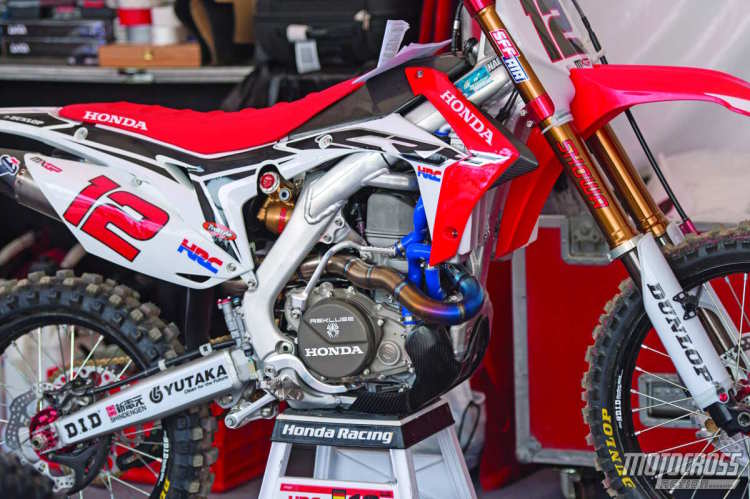 “RIGHT NOW WE ARE WORKING ON BIKES FOR FINAL PRODUCTION FROM TODAY RIGHT THROUGH TO FUTURE PROJECTS UP TO 2020.”
“RIGHT NOW WE ARE WORKING ON BIKES FOR FINAL PRODUCTION FROM TODAY RIGHT THROUGH TO FUTURE PROJECTS UP TO 2020.”
RIGHT NOW WE ARE WORKING ON BIKES FOR FINAL PRODUCTION FROM TODAY RIGHT THROUGH TO FUTURE PROJECTS UP TO 2020, but not further than that. On a brand-new project, from first ideas to a bike being on sale is typically three or four years. But that time is now getting shorter, as the customer likes to have new bikes and bikes that are changed every year.
I’VE SEEN THE INTRODUCTION OF ALUMINUM FRAMES, FOUR-STROKES, MASS CENTRALIZATION, AIR SUSPENSION, FUEL INJECTION—MANY THINGS, real big changes to production bikes. But, the biggest technological problem by far was the four-stroke, as it was just so different from the two-strokes we’d made for years. Our first CRF450 four-stroke was worked on for six years. Yamahas were first out in 1997, but we could all smell the coming of the four-strokes. All our engineers and those at our rival companies could smell it too!
WE LOOK CLOSELY AT THE OTHER MANUFACTURERS’ FACTORY BIKES AND PRODUCTION BIKES—EVERYTHING. Factory bikes go to factory riders only, or else we’d buy those! We have production bikes from Suzuki, Yamaha and other manufacturers, as they are our competitors. We ride them to test them and then take them apart completely. And, of course, we know they do the same to our bikes. I admire Honda most, of course. There’s not one other brand I admire the most outside Honda, but lots are doing interesting technical things.
IN ENGINEERING TERMS, YAMAHA DOES SOME INTERESTING THINGS—AND I DON’T JUST MEAN THE BACKWARDS-SLOPING ENGINE. That’s only one part of their technology. They obviously have a clear philosophy. It must come from what they are trying to do. They do some clever things. Our engineers had a very similar idea to Yamaha’s. We designed one and did the drawings, but we didn’t make it. It was fully work-ready to be made as a prototype, but we didn’t make the engine, as we believe our bike has a different philosophy. Our bike is easy to ride. I don’t know what Yamaha is trying to do.
IT’S ODD TO SEE KTM WINNING SO MANY WORLD CHAMPIONSHIPS as, realistically, there aren’t many KTMs in Japan. So, the Japanese factory bosses think it’s odd. We are back in GPs, as we want more riders to buy our bikes. Because of the economy of the past few years, there are many fewer motocross customers than before. We want a wider customer base, including beginners, which is why we want our bike to be the easiest to ride.
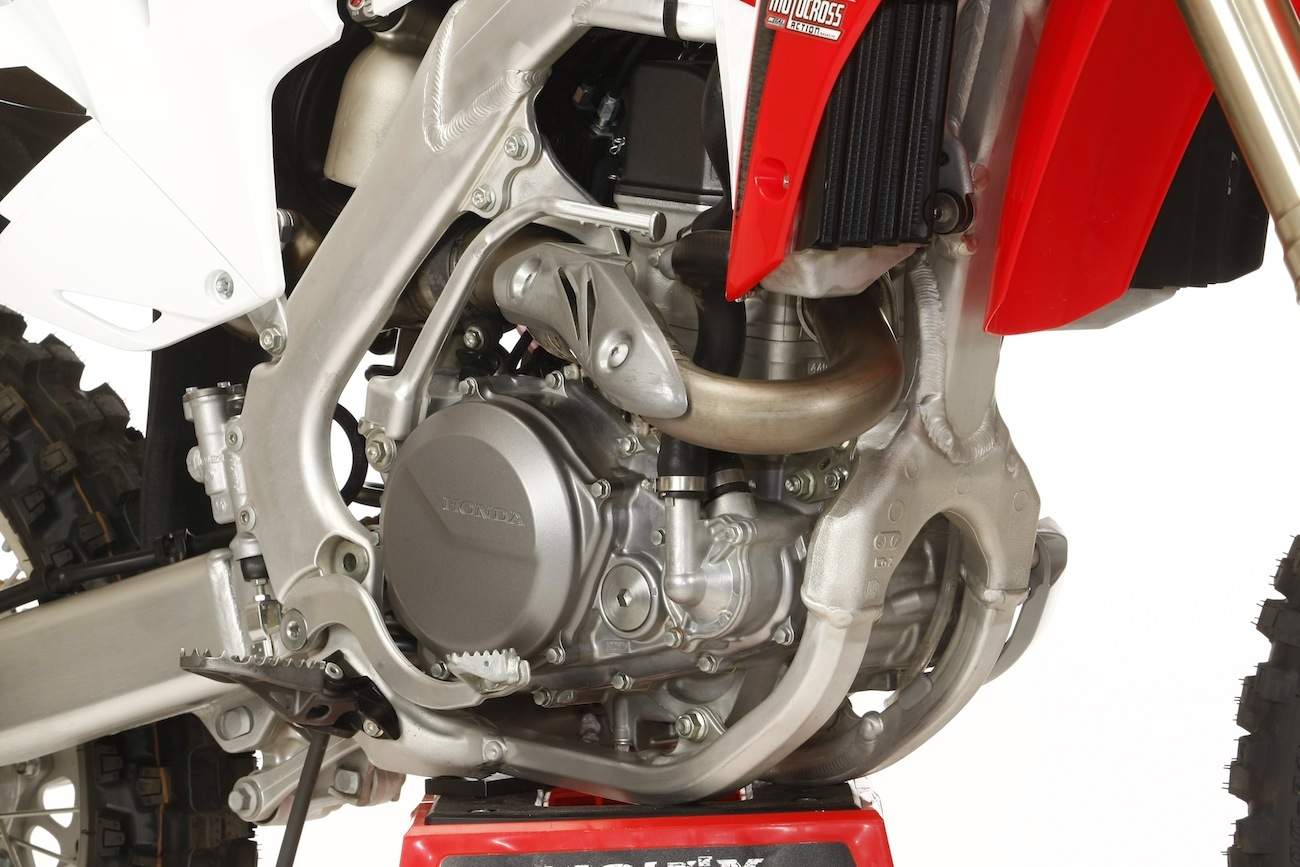 “WE KNOW THE STANDARD HONDA IS NOT AS POWERFUL AS SOME OF THE OTHER BIKES.”
“WE KNOW THE STANDARD HONDA IS NOT AS POWERFUL AS SOME OF THE OTHER BIKES.”
WE KNOW THE STANDARD HONDA IS NOT AS POWERFUL AS SOME OF THE OTHER BIKES, but for motocross it is still a very competitive machine. I don’t think we’ll see future production bikes a lot more powerful, but we’ll make them easier to ride. Of course, we want to win races, so the race bikes are faster. Sometimes we actually win; sometimes we lose. It is easier to make a bike faster at the GP level. It’s simple to get more power. But, to get the right balance of easy-to-ride and power is difficult.
THE CRF450 PRODUCTION BIKE COMES WITH AIR FORKS. I think in many situations they are very good, but we have to be careful. There is a lot of potential, though. Air fork technology has a long way to go, and four-stroke technology is not 100 percent right yet. It is still in its infancy, and we are still working hard on lots of things. Key issues are noise problems and driveability.
IT’S VERY INTERESTING TO THINK ABOUT AN AIR REAR SHOCK. I don’t know if we’d develop an air shock with Showa or KYB…or do it ourselves. Our CRF450 comes with KYB suspension, but the CRF250 has Showa. When we choose a company to supply suspension, we simply choose the one we think is the best for our bikes. Even though the 250 and 450 chassis are very similar, they really are different bikes. So, we test to see which is the best match for our bikes. We decide which vendor to use based only on performance, not on price—as their price is similar.
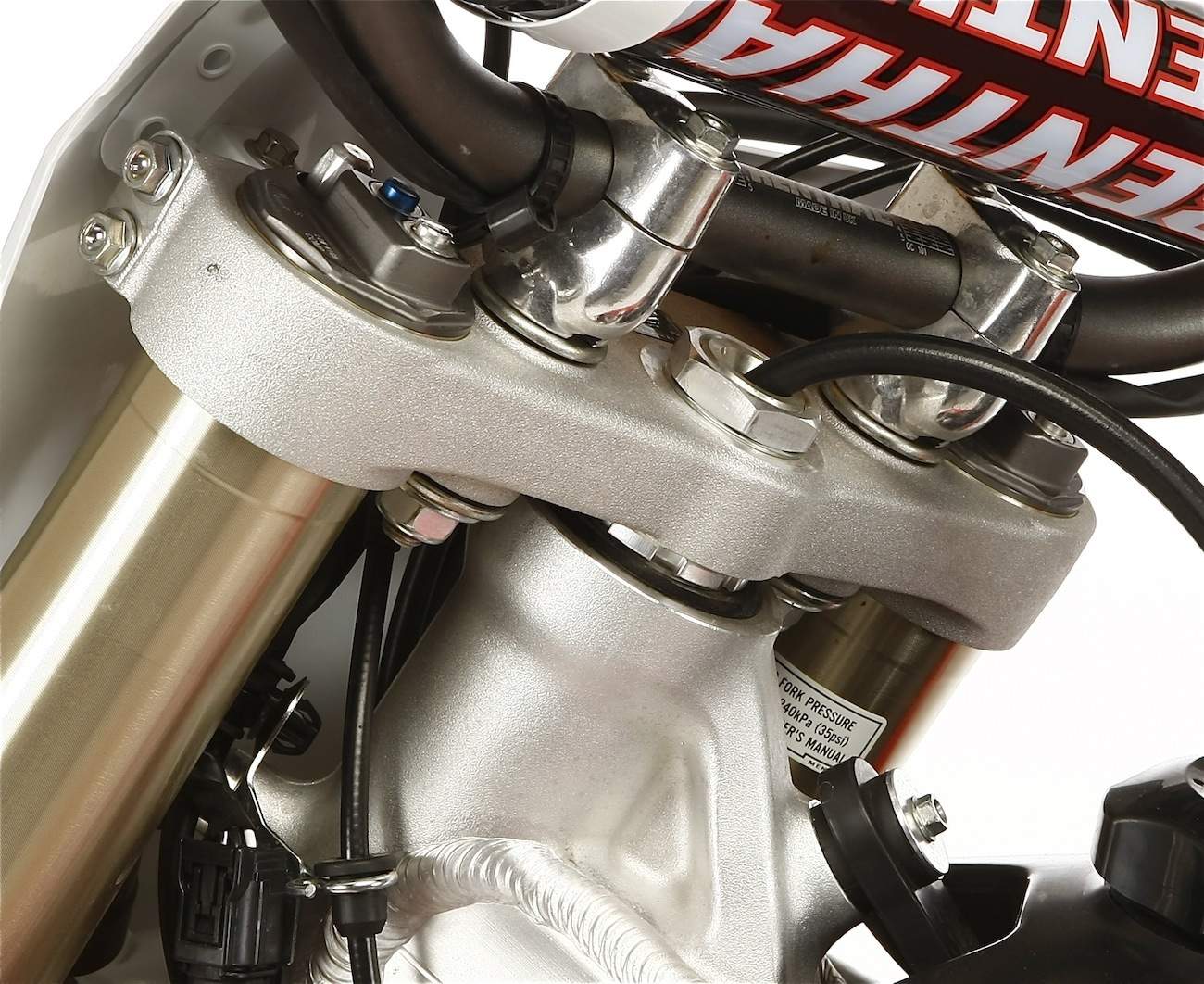 “I DON’T KNOW IF WE’D DEVELOP AN AIR SHOCK WITH SHOWA OR KAYABA…OR DO IT OURSELVES.”
“I DON’T KNOW IF WE’D DEVELOP AN AIR SHOCK WITH SHOWA OR KAYABA…OR DO IT OURSELVES.”
WITH YAMAHA, THE YZ250F AND YZ450F FRAMES ARE THE SAME, WHILE OUR 250 AND 450 FRAMES ARE JUST SIMILAR, because the engines are very different. I think in the future many manufacturers will use the same frame, as there are lots of benefits. Making bikes cheaper is just one benefit, but you also save on the cost of development and engineering. Our customers aren’t asking for cheaper bikes but for better bikes. They don’t tell us they want the same frame on both models, but we have to lead them with what we think is right.
WE HAD THE ALUMINUM-FRAME, SEMI-AUTOMATIC GEARBOX BIKES IN THE 1990s AND MANY MORE PROJECTS THAT HAVE TO REMAIN SECRET. But, my favorite bike is this new GP bike. For me, it’s always about the newest or next bike. Over all the years, I am most proud of the 2002 CR250 two-stroke—it’s my favorite bike, and I was involved with the whole project. It was all new, from the chassis to case-reed engine to electronic power valve. Ricky Carmichael won on it.
AMA RULES SAY PRODUCTION BIKES ONLY AND NO PROTOTYPES. THE AMA BIKES NOW ARE STANDARD BIKES WITH FACTORY SUSPENSION. The HRC GP bike may look similar, but it is a full factory bike. Some parts may be the same as standard, but many are totally different, like the cylinder head and pipe.
HONDA HAS A STEERING DAMPER, AND IT REALLY HELPS IN THE CORNERS. I don’t know why other manufacturers don’t do it, as it’s a real benefit in handling, especially keeping the bike neutral going into the turns. It’s not about stability on fast straights but really in the corners.
MY DREAM BIKE WOULD HAVE TO BE JEREMY MCGRATH’S 1995 HONDA. I worked with him a lot back then, and he is still a test rider that I work with for Honda now. I have worked with Carmichael, Everts, Lamson and more, but McGrath was the best. He was a great test rider and brought new riding techniques to the sport. He was friendly too. I have many great memories, especially going to so many Supercross races with McGrath. He’s a hero.
I DON’T GO TO MANY RACES ANYMORE. I STAY IN JAPAN. I go to a few AMA Supercross events, AMA Nationals and very rarely a GP. I really love motocross. My passions are both Supercross and motocross. People say they are different, but inside, Supercross is just motocross at its heart.


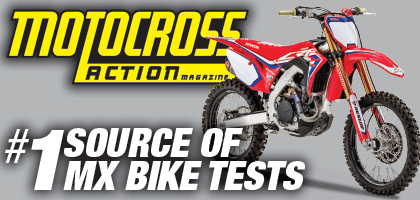


Comments are closed.